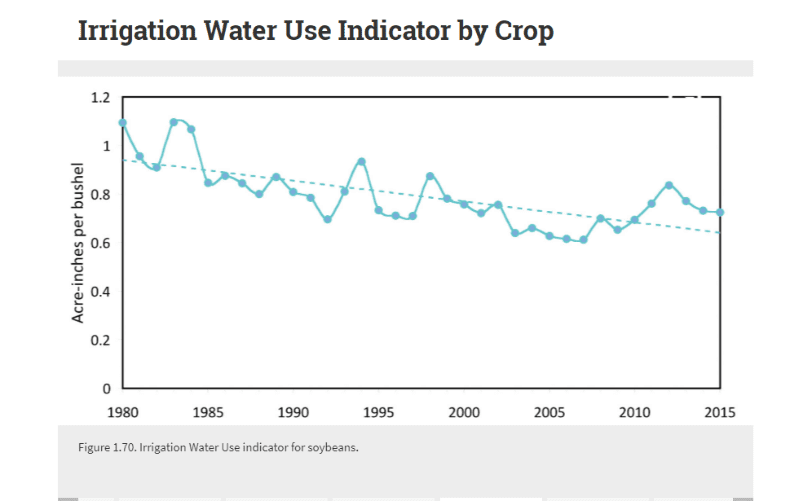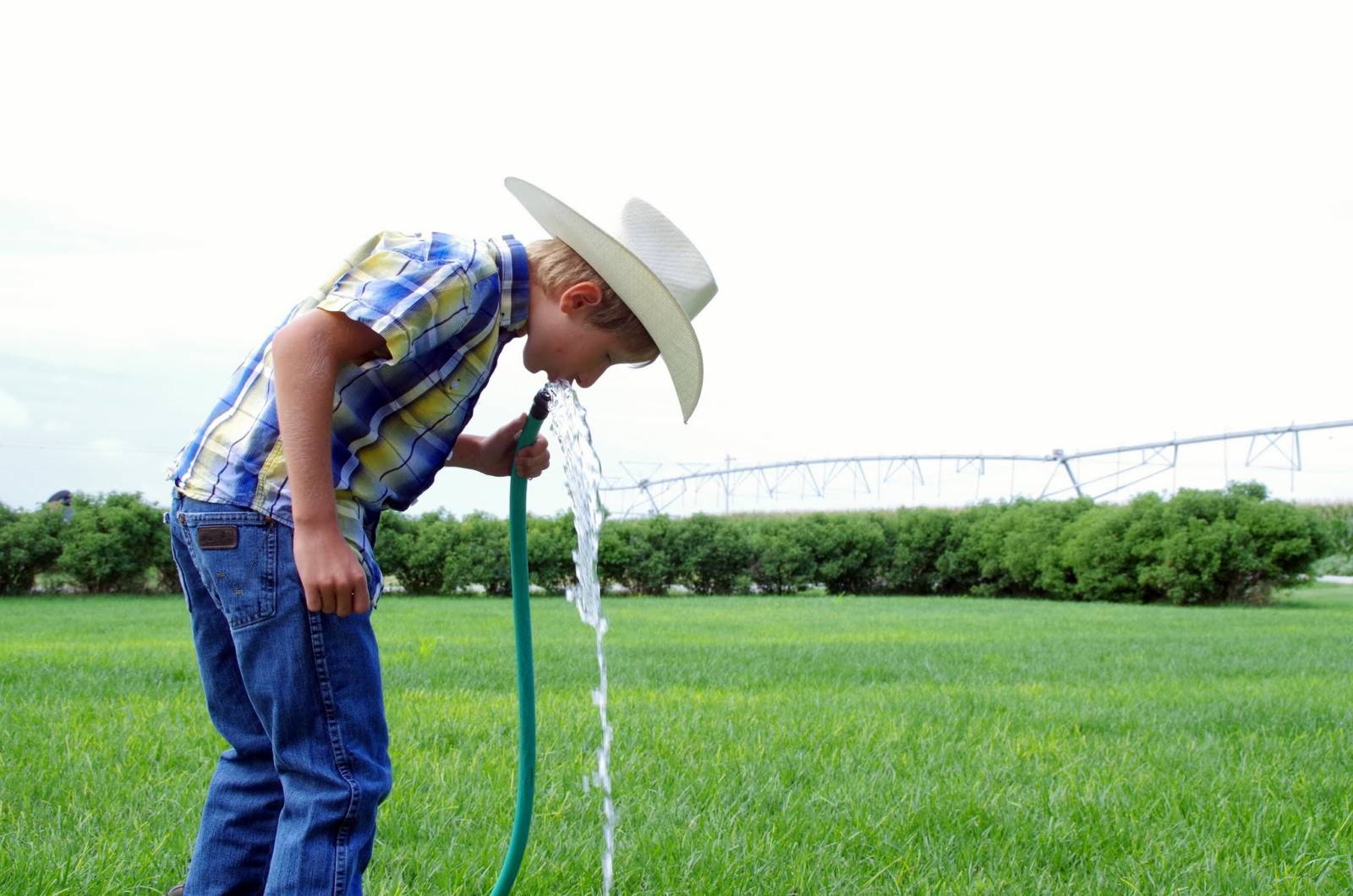For soybean farmers, water management encompasses much more than droughts and floods that make headlines.
“We only have a certain amount of fresh water available,” says Tim Scates, a farmer from Carmi, Illinois. “We need our aquifers and lakes to always be available. To do that, we have to manage both our water use via irrigation and the quality of water from our fields returning to the water system.”
Scates is one of the irrigation managers for his family’s business. They irrigate between 35 and 40 percent of their soybean acres each year. He notes that soybeans don’t respond to irrigation as predictably as other crops and must be managed carefully.
“Soybeans need water when they emerge, when they flower, and when they set and fill pods with beans,” he explains. “We prefer to rely on rainfall, but we irrigate soybeans in our light, dry soils when we don’t have the moisture we need at the right time. We’ve improved our irrigation water and energy efficiency over time, and we continue to find ways to get even better.”
According to USDA data, just 10 percent of U.S. soybean acres are irrigated. Most of those acres are in Arkansas, Mississippi and Nebraska, but irrigation can be found throughout the country on sandy soils that don’t hold water well. As Scates has experienced firsthand, irrigation water use efficiency is improving. Analysis of USDA data by Field to Market shows that soybean water use under irrigation decreased from 1.09 acre-inches per bushel in 1980 to 0.73 acre-inches per bushel in 2015.
Scates attributes much of that improvement to advances in technology. He says today’s irrigation rigs are designed to mimic perfect raindrops.
“Nozzle sizes vary throughout the rig to create water pressure and a spray pattern with drops that aren’t so small they evaporate, yet aren’t so large or fast that they cause soil compaction,” he explains. “We calculate water amount and the time to apply it so all the water soaks into the soil to the root zone, while preventing any runoff. We don’t want to waste any water — or the energy it takes to pump it.”
He adds that water pumps have gotten smaller and more efficient, so that fuel and energy use for irrigation has declined, as well.
“We have an agreement with our local, rural electric coop that allows them to interrupt our irrigation system during peak electricity use time periods, like late afternoons and evenings in the summer,” Scates says. “In return, we have a lower rate, and together we can conserve energy.”
Breeding technology has also contributed to improvements in water use. The Scates family selects soybean varieties proven to do well under irrigation for fields with water access and more drought-tolerant varieties for fields without it.
“The more water we pump, the more it costs, both at the moment and in the long-run,” says Scates. “Investments in water sustainability help us get the same results with fewer inputs.”
At the same time, he focuses on water quality. His family farms near the Wabash and Ohio Rivers in southeastern Illinois.
“Because of our location, water from our farm gets to a river pretty quickly, and we want clean water going in,” he says. “We want to keep soil and nutrients where they are supposed to be, not going down the river. Muddy water means somebody’s soil is in it. We don’t want it to be anybody’s soil, but especially not ours.”
Several management practices contribute toward this goal. Waterways and buffer strips help prevent runoff and erosion. Minimum-till and no-till disturbs the soil as little as possible during planting and throughout the season. Precision management of inputs like fertilizer and pesticides allows them to apply just what the crop needs at the time it needs it.
“As the world population grows, there will be hungry people somewhere,” Scates says. “Someday that might be here. We need to conserve water and energy to minimize that possibility.”

